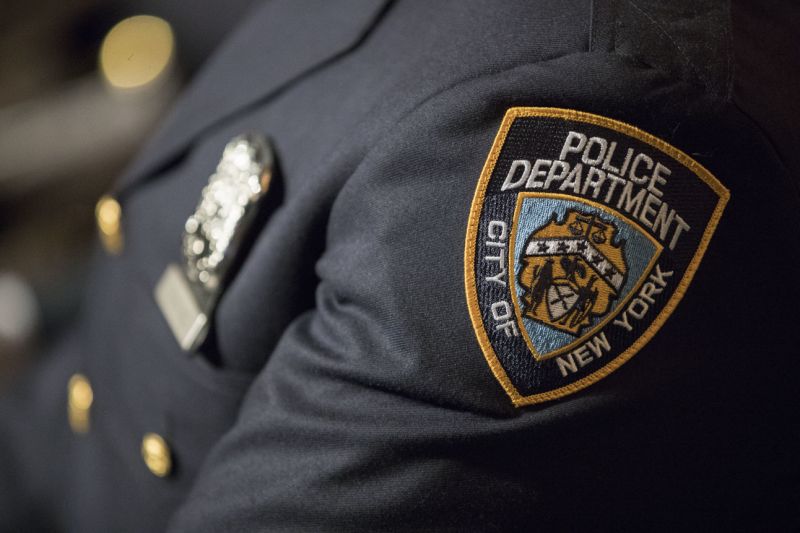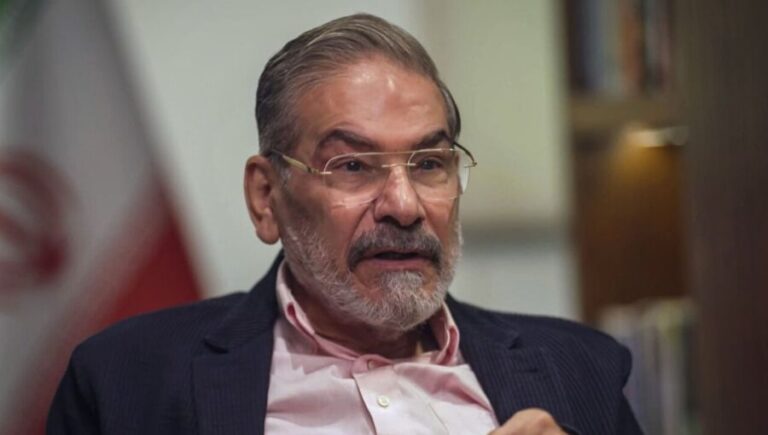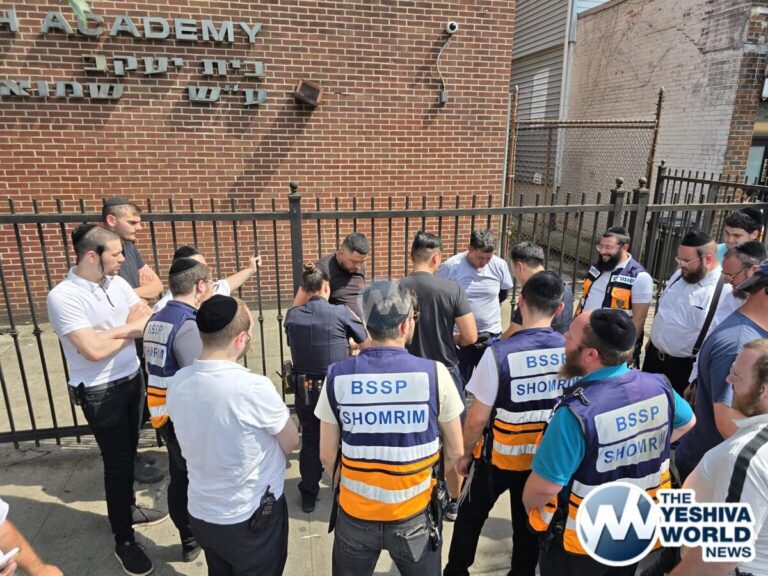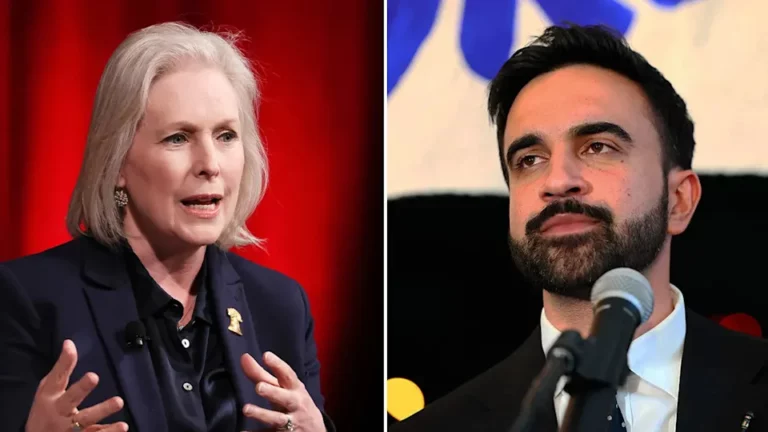Rep. Nydia M. Velázquez (D-NY) has led Democratic Members of the New York City Congressional delegation in pressing the New York Police Department (NYPD) for answers on how they are combatting what appears to be a recent wave of anti-Semitic acts. The letter comes shortly after a Columbia University professor found swastikas spray-painted in her office.
“Hate crimes and anti-Semitism have no place in our city, nation or society,” said Velázquez. “However, we’ve seen a disturbing rise in Anti-Semitism over the last two years. The attack in Pittsburgh focused our nation’s conscience on this problem, and, here, in New York, we’ve seen vandalism and violence meant to intimidate and terrorize those of Jewish faith. To that end, we are asking our City police for assurances that this issue remains top of mind and that they’re deploying sufficient resources to tackle the problem head on.”
Among other requests, the letter asks how much funding the Department has dedicated to combatting hate crimes and whether additional money will be necessary in the next budget year, due to the recent rise in Anti-Semitic activity. The letter also notes that some of the NYPD’s online hate-crimes resources are available in a range of languages, but not in Yiddish, something the lawmakers would like to see rectified.
“NYPD has done good work in this area, but it is clear from recent events that we can’t afford to rest,” Velázquez added. “We want to be certain they have a clear plan in place to take on these vile acts and arrest those who perpetrate them.”
“The disturbing hate-fueled attacks against New York’s Jewish communities is unacceptable and goes against everything our great city stands for,” said Chairman Crowley. “Bigotry and hatred have no place in our communities and immediate steps are needed to combat anti-Semitism and protect New Yorkers against hate and bias.”
“The alarming rise in anti-Semitism cannot be ignored,” said Congressman Eliot Engel. “The City must take a proactive stance in combatting this growing threat, which has affected communities from the Bronx to Brooklyn and everywhere in between. As Dean of the New York City delegation and Co-Chair of the House Bipartisan Task Force for Combating Anti-Semitism, I’m proud that my NYC colleagues have come together to help ensure this toxic problem is dealt with effectively.”
“Anti-Semitism cannot be tolerated in NYC or anywhere. The NYPD has clearly demonstrated that they are committed to combatting hate crimes of all kinds. As elected officials, we need to continue to work with the department to ensure that we are responding in the best and most efficient ways possible to combat anti-Semitism and all types of hate crimes. Beyond this work, I will continue to work to pass my Never Again Holocaust Education Act to learn from the past, so that we are not doomed to repeat it,” said Rep. Carolyn Maloney (D-NY).
“The recent wave of anti-Semitic acts in New York City and across the country is a chilling and tragic reminder that anti-Semitism continues to be a very real threat and that our Jewish communities remain vulnerable,” said Rep. Kathleen Rice (D-NY). “To that end, it’s not enough to simply condemn these acts – we need to assure the public that local law enforcement is taking every possible step to prevent them from happening in the first place. In New York City and on Long Island especially, the federal government plays a critical role in supporting this work, and Congress remains committed to maintaining and strengthening that partnership in the years to come.”
“The rise in Anti-Semitism particularly troubling for cities like New York, where people of Jewish faith are an integral part of our history and community. We must do everything we can to prevent these expressions of hate and intimidation from taking place in New York and make sure our local law enforcement agencies are adequately prepared to prevent, investigate and address them. As the top Democrat in the Commerce, Justice and Science Appropriations Subcommittee, I will do everything I can to make sure that the NYPD has all the resources that they need to put a stop to hate,” said Congressman Jose E. Serrano.
“According to new FBI data, hate crimes rose an astounding 17 percent last year and anti-Semitic hate crimes rose 37 percent. These acts are in no way reflective of our country’s core values of tolerance, respect, and human decency. These cowardly, hate-fueled actions are reprehensible and have no place in our city, country, or society. I stand shoulder to shoulder with my Jewish brethren in renewing my call to law enforcement to ensure that Jewish communities across the country are protected. My colleagues and I remain grateful to the NYPD for the work they are doing to combat these hate crimes, but there is still more work to be done. We must ensure that our communities are protected and that more is done to address the divisive climate of hate in America,” said Congresswoman Yvette Clarke.
“Whether the dog whistling has been intentional or otherwise, rhetoric from the White House down to the social media circles on Gab have signaled to white nationalists that they are safe to preach their hatred in the open. Regrettably, we have seen this poison manifest into hate crimes throughout our nation, and in our city of New York. The NYPD has been swift to respond and, by publishing the surge of anti-Semitic hate crimes, helped give this growing issue the attention it deserves. We must work together with the NYPD to ensure they have all the resources necessary for protecting our populations most vulnerable to being targeted, and reassess our strategy,” said Rep. Gregory W. Meeks.
The full text of the letter is below. A .pdf is online here.
December 3, 2018
The Honorable James P. O’Neill
Commissioner, New York Police Department
1 Police Plaza
New York, NY 10038
Dear Commissioner O’Neill:
As Members of Congress, we write to express our concern over the spike in anti-Semitism in New York City. Our City’s Jewish community, unfortunately, is increasingly the target of hate crimes. Just last week, the faculty offices at Columbia University’s Teachers College were vandalized with Anti-Semitic slurs and graffiti. This crime follows an overall trend that, in the past two years, has consistently targeted the community at large.
In November 2016, for example, swastikas were accompanied by political graffiti indicating support for President Trump in a children’s playground. During that year, hate crimes increased in New York City over 30 percent. In May of this year, a rabbinical student was assaulted in Crown Heights for speaking Hebrew on his cell phone. Earlier this month, James Polite was arrested for allegedly desecrating the Union Temple of Brooklyn—a historic landmark that is on the U.S. National Register of Historic Places. Shortly following Polite’s arrest, a number of teenagers were arrested for drawing swastikas on steps and garage doors in Brooklyn Heights. Local police reports note that anti-Semitic crimes are increasing even though the City continues to experience a drop in other crimes. This year, anti-Semitic incidents have increased by 22 percent year to date from November 4, 2018 through November 4, 2017. More alarmingly the Police Department reports that Anti-Semitic incidents have “constituted half of all hate crimes in New York this year.”
We applaud the New York Police Department’s (NYPD) efforts to respond appropriately to the needs of our City’s Jewish communities and combating anti-Semitism.
We commend your individual attitude, leadership and commitment to ensure that such crime will not be tolerated in our City. Yet, we remain gravely concerned over the possibility of additional local hate crimes targeting New Yorkers because of their ethnicity or religious background.
Furthermore, we remain concerned that there may be other hate crime victims in our communities who may be afraid to speak out against these crimes out of fear.
To ensure that NYPD’s current efforts are providing all appropriate resources and identifying any future areas of improvement for current and future policy, we ask that you respond to the following questions:
This past October, NYPD deployed heavy weapons teams, counterterrorism officers and special operations units to help patrol houses of worship across the City. The goal of this operation was to prevent any further hate crimes.
How does the Department evaluate risk when assigning patrols to houses of worship?
How does this assessment of risk determine placement or frequency of patrols?
Does such assessment of risk also lead to additional changes to the immediate vicinity or neighborhood surrounding a house of worship?
The NYPD’s Hate Crimes/Bias Incidents webpage provides valuable information for the public. It describes the definition of a hate crime, a brief analysis of how to identify such crime versus freedom of speech, and mechanisms to report a hate crime. The brochures are currently available in Arabic, Bengali, Chinese, English and Spanish. As of the time of this letter’s writing, current materials are not available in Hebrew or Yiddish. This is particularly shocking given the rise in anti-Semitic crimes.
The City of New York’s Executive Order No. 120 requires that city agencies take “reasonable steps to develop and implement agency-specific language assistance plans regarding limited-English proficiency (LEP) persons[’]” access. Yet despite this Executive Order, a number of languages that appear on the American Community Survey Microdata do not appear on the current NYPD’s hate crime information webpage.
i. What can be done to ensure that appropriate translations of current NYPD materials available online are made available to speakers of languages that are commonly requested for translation and that do not currently have an appropriate translation?
ii. Does the NYPD intend to provide such materials in the immediate future for Hebrew and/or Yiddish speakers?
iii. When should such materials be available on the referenced website for public review and download?
iv. How does your agency intend to roll out public awareness of the availability of such material should Hebrew and/or Yiddish translations be made available?
How often are officers from the Hate Crime Task Force meeting with community-based organizations? Are these meetings organized in a coordinated matter by the task force or are such meetings held at the discretion or request of the individual precincts?
Is the NYPD partnering with local community organizations and appropriate local educational officials (i.e. principals, assistant principals, deans), or institutions of higher learning in the immediate area of reported hate crimes to discuss the impact and consequences of such hate crimes with community youth or students?
i. If so, how often do these meetings occur? How are current resources prioritized to meet current needs?
What outreach tools does the NYPD employ to inform community-based organizations and specifically, those from the Jewish community, to encourage hate crime reporting?
Do your current efforts focus on in-person interactions or depend primarily on social media platforms?
Current NYPD Complaint and Bias Motivation Statistics provide an initial view of incidents during the past year and a half divided quarterly. The Police Department also provides these data in an annual report at the end of the calendar year. While the data provide information about the frequency of such incidents at each of the Department’s precincts, current presentation of data may be overwhelming for the public.
Does the NYPD have any future plans to consolidate the three (3) current quarterly excel spreadsheets into a format or single spreadsheet that allows the general public to review and assess complaint statistics, complaint statistics by bias motivation and arrest statistics by bias motivation?
Is there any future plan to provide graphs or other appropriate interactive interface mechanisms so that the general public will be able to filter by precinct, borough, or zipcode?
The 2017 report entitled Crime and Enforcement Activity in New York City provides statistics on race and ethnicity along with complaint and arrest data. While the report provides valuable data on felony and misdemeanor crimes, it does not have any specific section related to hate crimes.
i. Is there any plan to include such section in future reports?
How much funding is currently allocated by the Department to prevent, solve, and mitigate hate crimes?
What funding sources (federal, state, or city) does the NYPD depend on to address and prevent bias and hate crimes?
Based on your answers to 6a., and given the recent rise in hate crime incidents, does the NYPD intend to change its budget proposals, projections, or estimates to increase funding to address, prevent, and solve hate crimes?
We would like to reiterate our sincerest thanks to the NYPD as we continue to work together to reduce hate crimes and bias incidents in our communities. We respectfully request a response within 60 calendar days of this letter. Your response will be crucial in determining appropriate next steps and, based on available data, provide critical insight as we examine the need for additional assistance under the legislative process.
Sincerely,
Nydia M. Velázquez
Jerrold Nadler
Joseph Crowley
Thomas R. Suozzi
Eliot Engel
Grace Meng
Carolyn B. Maloney
Kathleen Rice
Adriano Espaillat
José E. Serrano
Yvette D. Clarke
Hakeem S. Jeffries
Gregory W. Meeks












One Response
what you have here is simple
THE BLIND LEADING THE LAME